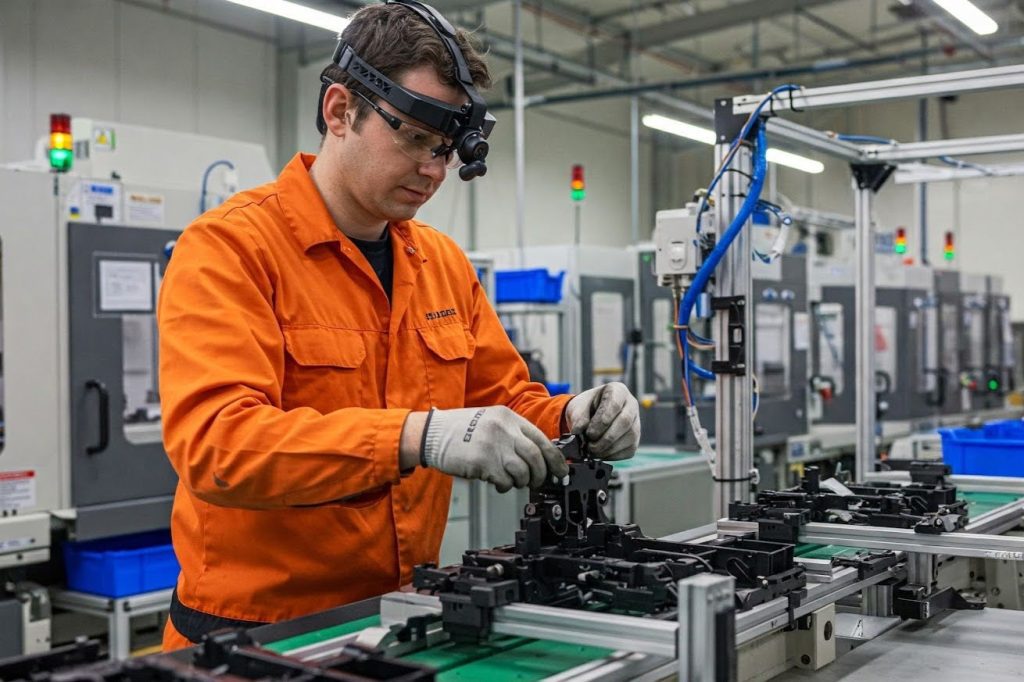In modern manufacturing environments, the clarity of work instructions can make or break productivity. This is especially true when training new operators or upholding high production standards. Video is no longer a luxury—it’s a necessity. It bridges knowledge gaps, speeds up onboarding, and reduces costly mistakes.
Whether you’re a shift leader, technician, or production trainer, knowing how to record high-quality instructional videos can transform how your team learns. This guide outlines the essential techniques, equipment setups, and practical advice for recording effective video content—using tools you likely already have.

Why Video-Based Training Works
Clear visual content improves comprehension and retention. Over 80% of younger workers say they rely on platforms like YouTube to learn new skills. In manufacturing, this translates into faster training, fewer repeated questions, and better performance on the shop floor. Well-recorded videos help standardize procedures, reduce the need for shadowing, and improve operator confidence.
Recording Methods: Choose What Works for You
Solo Recording – First-Person View
This method works well when you’re working alone or in confined spaces. Use a head-mounted or chest-mounted camera and angle it slightly downward to keep your hands and the work area in view. Move slowly, and consider narrating what you’re doing in real-time to reduce the need for voiceovers later.
Two-Person Setup – Operator and Cameraperson
This setup offers better framing and flexibility. One person performs the task while the other records, ensuring all key details are captured clearly. This also reduces distractions and increases safety for the person demonstrating the task.
Using a 360-Degree Camera
A 360 camera captures everything around you, which means you don’t have to worry about framing during recording. This is especially useful for body-worn setups in unpredictable environments. However, defining the final export viewing angle later requires additional editing time.
Recording Digital Processes
Screen Recording with REWO
REWO includes a built-in screen recorder that makes it easy to capture software tutorials, login procedures, or machine configurations directly from your computer.
Filming Machine Screens with a Smartphone
Some machines don’t support screen recording, so using a smartphone is the next best option. Fix the phone in a stable position and check for reflections. Make sure the screen is visible and that finger taps or mouse clicks are easy to follow. You can add pauses between actions or include annotations during editing to help guide the viewer.
Best Practices on the Shop Floor
Start by recording in landscape mode. Lighting matters—use natural light or a ring light if needed. Stabilize your camera using a tripod or a body mount and double-check your framing before you begin. It’s a good idea to rehearse the process once without recording.
Speak clearly and slowly. Record more footage than you think you’ll need—you can always cut it down later. Don’t worry about making everything perfect in one take. Focus on capturing clear, complete steps. If a step is difficult to film, consider supplementing it with photos or text.
Mistakes to Avoid
Avoid shaky, handheld recordings. Don’t let your hands or tools block the camera view. Ensure your recording environment is well-lit. Always review your footage immediately and re-record any unclear sections while you’re still on site. Also, avoid moving too quickly or using unclear terminology that might confuse new operators.
Editing for Clarity
You don’t need expensive software. Trim unnecessary sections, remove long pauses, and use clips from different angles if needed. Keep videos short and focused on individual steps. Upload your final videos into REWO and enrich them with text, voiceovers, and supporting visuals.
Final Advice
Create a consistent recording approach by using a checklist. Train your team in basic video techniques. Standardized videos not only save time, they raise the overall quality of your instructions. The best videos are the ones your team can understand and follow with confidence.
For more guidance, visit rewo.io or contact our team directly.
